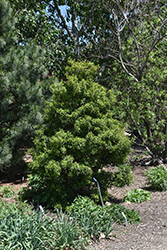Fri & Sat 8am - 8pm
Sun 8am - 7pm
Anytown, USA 12345
fax: 261.787.0463
e-mail: info@successgc.com


Plant Finder

Height: 7 feet
Spread: 4 feet
Sunlight:
![]()
![]()
Hardiness Zone: 6a
Description:
A dwarf, pyramidal evergreen that can be massed as a screen or maintained as a low hedge; interesting spineless foliage is dark olive green and narrowly oval in shape; showy red berries in fall and winter; needs male pollinator
Ornamental Features
Nasa Holly is primarily grown for its highly ornamental fruit. It features an abundance of magnificent red berries from late fall to late winter. It has attractive olive green evergreen foliage. The small glossy narrow leaves are highly ornamental and remain olive green throughout the winter.
Landscape Attributes
Nasa Holly is a dense multi-stemmed evergreen shrub with a distinctive and refined pyramidal form. Its average texture blends into the landscape, but can be balanced by one or two finer or coarser trees or shrubs for an effective composition.
This is a relatively low maintenance shrub, and is best pruned in late winter once the threat of extreme cold has passed. It is a good choice for attracting birds to your yard. It has no significant negative characteristics.
Nasa Holly is recommended for the following landscape applications;
- Accent
- Mass Planting
- Hedges/Screening
- General Garden Use
Planting & Growing
Nasa Holly will grow to be about 7 feet tall at maturity, with a spread of 4 feet. It has a low canopy with a typical clearance of 1 foot from the ground, and is suitable for planting under power lines. It grows at a slow rate, and under ideal conditions can be expected to live for 40 years or more. This is a female variety of the species which requires a male selection of the same species growing nearby in order to set fruit.
This shrub does best in full sun to partial shade. It requires an evenly moist well-drained soil for optimal growth, but will die in standing water. It is very fussy about its soil conditions and must have sandy, acidic soils to ensure success, and is subject to chlorosis (yellowing) of the foliage in alkaline soils, and is able to handle environmental salt. It is somewhat tolerant of urban pollution. Consider applying a thick mulch around the root zone in winter to protect it in exposed locations or colder microclimates. This particular variety is an interspecific hybrid.
